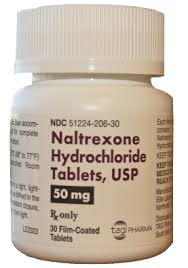The term opiate antagonist or opioid antagonist is used to describe a receptor antagonist that acts upon the opioid receptors that are naturally found in the human body. Opiate antagonists drugs are used to bind to the opioid receptors in the body more strongly or with a higher affinity that agonists which results in the blocking of the opiate receptors and prevents the body from have a response to drugs such as heroin or other opiates.
There are a number of different opiate antagonist drugs but two of the most commonly used opiate antagonists that are used in opiate addiction treatment include:
- Naloxone
- Naltrexone
These are called competitive antagonists and they prevent the normal response that the body has to opiates by blocking opioid receptors and weakening the effect that an opiate has on causing chemical changes in the user.
If you or a loved one is addicted to opiates and interested in medication treatment, call 800-442-6158 Who Answers? .
What are Selective Antagonists?

Opiate antagonists are used in pain management
Some drugs are considered selective antagonists which mean that they work on a specific type of opioid receptor. There are three types of opioid receptors that a selective opiate antagonist can block. They are:
- Mu opioid receptors
- Delta opioid receptors
- Kappa opioid receptors
There are other types of opioid receptors which may also be blocked using opiate antagonists or selective antagonists but the above three types of opioid receptors are the most widely known and were the first to be discovered by medical research findings. These three continue to be the most widely used in the treatment of opiate dependence and addiction.
There are three very common types of selective antagonist drugs that are used in the treatment of opiate addiction. They are:
- Cyprodime
- Naltrindole
- Norbinaltorphimine
How do Opiate Antagonists Work?
Opiate antagonists work by binding to the opioid receptors (such as the mu, delta or kappa receptors) and overriding any reaction that these receptors could have to the introduction of opiates to the system. When a user is taking an opiate antagonist, he or she will not feel the effects of heroin, morphine or other opiates because the opiate antagonists will block the body’s normal response to these drugs as well as the endorphins that may also be released when such drugs are administered.
Examples of Opiate Antagonists
Various types of opiate antagonists exist but the most common include:
- Naloxone
- Naltrexone
- Narcan
- Narcon
- Narcotan
- Vivitrex
- Zynol
Many other opiate antagonists exist as well. There are nearly 100 different opiate antagonist medications that are prescribed by doctors for the treatment of opiate addiction so you may or may not be prescribed one of the more common medications that is listed above.
Long-Acting Opiate Antagonist
Treatment for opiate addiction has begun to veer in the direction of finding suitable medications that have a long-acting effect on the user and require fewer doses. This eliminates the need for frequent doctor visits and can reduce the risk of missing a dose. Naltrexone is one of the most commonly used long-acting opiate antagonists which can remain in the system for about 96 hours following the initial dose and has a half-life of between 4 and 10 hours. The slow elimination of long-acting opiate antagonists such as naltrexone allow patients to spend less time focusing on medication administration and more time focusing on counseling and other factors pertaining to recovery.
For help finding a rehab center that offers medication treatment, call 800-442-6158 Who Answers? .
Naltrexone
Naltrexone is an opiate antagonist that can help those who are addicted to opiates such as heroin or prescription painkillers to stay away from opiate use due to the lack of pleasurable experience that comes when this medication is taken and subsequent opiate abuse occurs. Some people do well with Naltrexone as a treatment for opiate dependence while others find the need to take the drug every day to be a difficult process and the risk of missing a dose is too high.
Naloxone
Naloxone is actually considered an opioid inverse agonist. This drug is not used in the treatment of opiate addiction but rather the treatment of opiate overdose. When administered to an individual who is overdosing on opiates, Naloxone can stop the effects of the opiate allowing the user a chance to breathe. This drug has been widely used in the emergency treatment of opiate overdose and reduces the rate of fatality significantly over other drugs or the lack of medication completely when an opiate addiction is occurring.
Low Dose Opiate Antagonists
Recent studies suggest that low dose opiate antagonists such as Naltrexone when paired with opiates can actually increase the effectiveness of the opiate while reducing the risk of tolerance or physical dependence. These studies have only just started to touch base on the potential for low dose opiate antagonists to be paired with opiates when prescribed to reduce the risk of patients becoming subsequently physically dependent on the drugs and the use of such has not yet been approved on a wide scale.
Much more research and additional clinical trials must be performed in order to determine the safety and effectiveness of using low dose opiate antagonists to ward off the dangers of opiate dependence but there is hope in this research. If medical advances can lead to the use of such drugs to reduce the severity of opioid withdrawal there could be increases in the number of opioid dependent users who actually seek treatment sooner, rather than later.
Understanding Opiate Antagonists
Opiates, opiate agonists and opiate antagonists all work in a similar way—by finding the opiate receptors and binding to them. The primary difference between them is that an opiate agonist will bind to the opioid receptor and activate the receptor to do its job which is to increase endorphins and reduce pain. An opiate antagonist will bind to that same receptor and fight the opiate agonist sort of like a competition. The medication that is binding to the opiate receptor and which has the higher affinity will win the battle.
For instance, if morphine, an opiate agonist is administered, it will quickly hunt down the opioid receptors and bind to them. In order to fight the effects of morphine, such as when an overdose occurs, Naloxone may be administered. If Naloxone is administered, it too will quickly enter the body and hunt down the opioid receptor and will find those same receptors that the morphine has bonded to. The Naloxone has a much higher affinity than the Morphine so that Naloxone will win the battle and bind to the opioid receptor. This will result in reversal of the effects of the morphine.
For more information about opiate antagonists, or for help finding addiction treatment, call 800-442-6158 Who Answers? .











